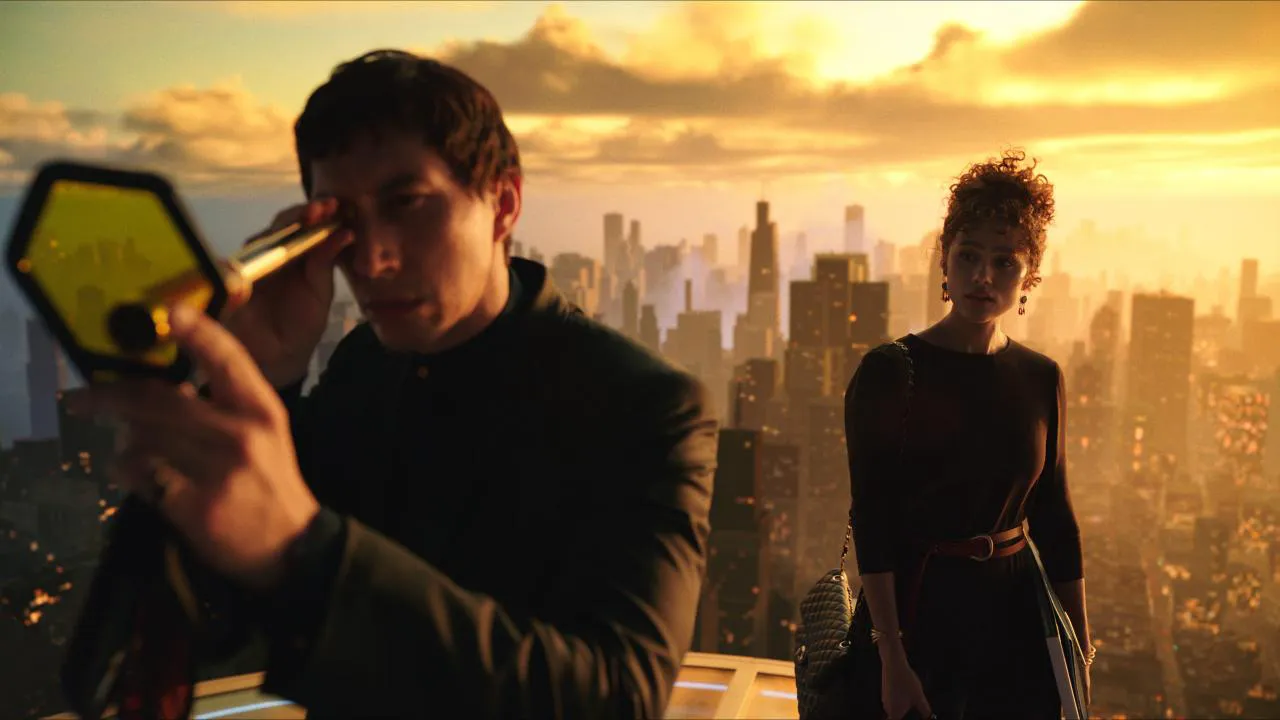Megalopolis

Plot
In the city of New Rome, a metropolis of breathtaking grandeur and technological marvels, two ideologies collide. Cesar Catilina, a visionary and charismatic artist, has set his sights on transforming the city into an utopian future, a haven where innovation, art, and humanity unite. His goal is nothing short of revolutionizing the status quo, but for Mayor Franklyn Cicero, this vision is a threat to the established order. As the city teeters on the brink of chaos, Julia Cicero, the mayor's daughter, is caught in the crossfire, torn between her love for the enigmatic Cesar and her loyalty to her father. New Rome is a city of contrasts, where ancient architecture and modern wonder walk hand in hand. Towering skyscrapers pierce the sky, and suspended walkways crisscross the city, demonstrating the ingenuity and progress that Cesar seeks to amplify. Despite its grandeur, New Rome is also a city consumed by greed, corruption, and partisan bickering. Mayor Cicero, a stalwart defender of the establishment, is content to quell dissent and maintain the status quo, even if it means sacrificing the city's potential. Cesar, however, is driven by a different vision. He sees the city as a canvas, waiting to be transformed by the power of art and imagination. With his magnetism and persuasive powers, he begins to gather a following of like-minded individuals, each contributing their talents to the cause. As their efforts gain momentum, Cesar's charisma draws Julia into his orbit. Their relationship deepens, and she finds herself drawn to Cesar's idealism and passion, but also to the sense of purpose he gives her. Julia's father, however, sees Cesar as a threat to his authority and the power structure he has controlled for so long. He dismisses Cesar's utopian dream as a naive fantasy, warning Julia that her association with the artist will only bring trouble and heartbreak. As tensions rise, Julia is forced to confront the conflicts that have long simmered within her. Her love for Cesar pits her against her father and the social status she has always known. As the rift between Julia and her father widens, Cesar's vision for New Rome begins to take shape. Using his art as a medium, he creates sweeping installations that evoke the city's potential. These works of art spark a sense of wonder and possibility in those who see them, and soon, ordinary citizens begin to take notice. They start to question the status quo and their place in it, inspiring a grassroots movement that challenges Mayor Cicero's authority. With the city on the brink of chaos, Julia must confront the consequences of her choices. Will she support her father's attempts to suppress the growing dissent, or will she stand with Cesar and his promise of a better future? As the stakes rise, she must weigh her loyalty to those closest to her against her own vision for what New Rome could be. In the midst of this turmoil, Cesar's art continues to captivate and inspire the city's inhabitants. His masterpieces become a rallying cry for those seeking change, and his influence spreads beyond the confines of the art world. As tensions escalate, Cesar's dream begins to take shape, with Julia at its center. As the battle for New Rome's future intensifies, Julia faces a choice that will determine not only her own destiny but also the course of the city's history. Will she choose the comfortable existence and familiarity offered by her father, or will she take a leap of faith and commit to Cesar's idealistic vision? The fate of New Rome hangs in the balance, as Julia's decision sets off a chain of events that will reshape the city forever.
Reviews
Madelyn
A visually jaw-dropping film that demands reverence. It evokes German Expressionist cinema - like ancient dinosaurs, mysterious and colossal.
Austin
"Megalopolis" was one of the most immense film productions of its time, utilizing two million feet of film and employing 25,000 male actors, 11,000 female actors, and 750 child actors. The initial completed version of the film ran for three and a half hours. The version premiered in Berlin, Germany, was 153 minutes long (4189 meters of film, projected at 24 frames per second). Subsequently, the distributor edited it down to a version approximately two hours long for release in Germany and abroad. However, due to factors such as box office revenue and political censorship, past releases around the world have been heavily truncated versions, with varying runtimes, often with more than half the content removed. The original negative of the film has been unseen since World War II...
Hazel
The film repeats ad nauseam that the heart is the mediator between the mind and the hand, a blatant defense of capitalists. It suggests that these two classes can only communicate, not integrate, requiring a third party to act as a bridge. Regardless of how the character of Maria is shaped, she is consistently exasperating. However, the film, a classic of the 1920s, is truly praiseworthy from an aesthetic standpoint, with its magnificent scenes and innovative filmmaking ideas.
Eden
The visual imagery is ahead of its time, truly a classic of cinematic innovation. However, the story's logic is muddled, the performances are exaggerated, and the details don't withstand scrutiny.
Caroline
The way men talk to each other in this movie feels like they're about to kiss.
Recommendations





